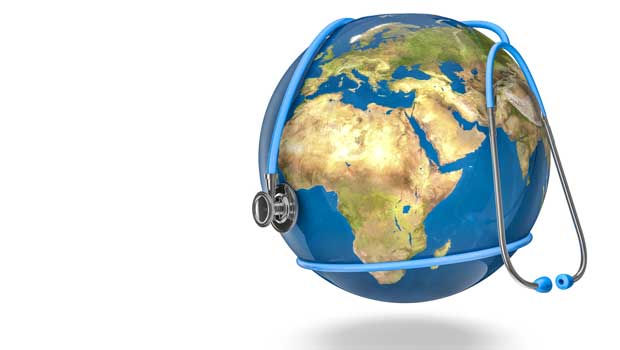Four Countries’ Different Standards on Pump Safety

As discussed in the first part of this series on insulin pump safety, there is little international agreement on safety standards for pumps. Many people with diabetes in the U.S. have a rudimentary understanding of the FDA process for approving a medical device: the device will fall into one of three classes of regulation; manufacturers of some Class II and all Class III devices will need to provide scientific evidence proving the devices are safe and effective, as well as evidence that the devices are manufactured in a safe facility.
Some countries align closely to FDA standards, while others adhere closely to the standards set by the European Union; the EU standards are generally not considered as rigorous as FDA standards.
Here is how pumps are regulated in four other countries in North America and Europe:
Canada
Canada regulates medical devices in much the same way as does the U.S., through a combination of pre-market review, post-approval surveillance and the regulation of a manufacturer’s quality assurance program. Within the Health Canada agency, the Medical Devices Bureau of the Therapeutic Products Directorate (TPD) grants licenses for sale of different classes of medical devices, with classification based upon levels of risk to human health from misuse or failure. Devices are grouped into four classes, with Class I devices presenting the lowest potential risk (think a lancet), and Class IV devices presenting the greatest potential risk to human life (like a pacemaker). Prior to distributing a device in Canada, manufacturers of Class II, III and IV devices must obtain a Medical Device License from the TPD.
The regulations come from Canada’s Food and Drugs Act. Compared to the compendium of FDA regulations and guidance publications which pertain to medical devices, the Canadian statute and regulations are quite cleanly and economically written, which might reflect more on a better quality of lawyering than the quality of Canada’s medical device regulatory apparatus.
Canadian law is similar to U.S. law in that it requires devices to carry evidence of safety and effectiveness before they are allowed into the market. The time needed for pre-market clearance review varies depending on the class of the device, according to Health Canada. Class III & IV applications have a target review time of 75 days and 90 days respectively, and Class II applications have a 15 calendar-day target.
Canada allows non-reviewed and approved devices to be used by clinicians who request to do so through Canada’s Special Access Programme (SAP). A doctor may invoke SAP clearance in emergency situations, when conventional therapies have failed or are unavailable. This is equivalent to the way the FDA regulates Class III Humanitarian devices.
United Kingdom
The UK regulates medical devices through a registration process administered by its Medicines and Healthcare Products Regulatory Agency. For purposes of marketing a medicine or device, you can apply to distribute strictly within the UK or for distribution across EU member nations. The governing laws for this are Britain’s Finance Act of 1973 and Consumer Protection Act of 1987, the latter which calls on the UK government to adopt the EU regulatory scheme for such devices. Through this, the European Medicines Agency (EMA) sets standards for when and how devices must be submitted to pre-market trial, and it also prescribes the nature and scope of scientific information which must be submitted in support of the registration.
The principal difference from FDA regulation is that a device may achieve registration for sale in the UK without showing that it is an improvement over existing therapeutic products, or that it will meet an unmet medical need. The UK looks to EU directives to determine when a device should be removed from the market after a showing that it is unsafe, or has been misbranded or mislabeled, or that it bears the CE mark in violation of CE marking requirements.
The UK is home to Medtronic’s corporate headquarters.
Germany
Germany enacted a revised general law on medical devices in 2010. While it is generally quite similar in scope and content to its UK counterpart, German law includes a section prohibiting distribution of devices where “there are grounds to suspect that the safety and health of patients, users, or third persons could be compromised, directly or indirectly, to a degree which exceeds tolerable limits according to medical scientific knowledge.” By any standard of proof, “grounds to suspect” is a legal burden easily met, so the German standards are considered the toughest in the EU. Violation of that prohibition carries a minimum of three years of imprisonment, with enhanced penalty where death or irreversible medical injury is a possible outcome of device failure or poor design.
Denmark
The Danish Health and Medicines Authority does not involve itself in the regulation of medical devices. Since 2014, the agency has maintained a registry of organizations headquartered in the country which are engaged in the business of manufacturing and distributing devices. With some exemptions for lowest-risk class products, any medical device offered on the market in Denmark must merely carry the CE mark, and can therefore be presumed safe. This means that Novo Nordisk’s home country has no regulatory role in the oversight of its products, other than registering it as a manufacturer.
To read other parts of this series, go to:
Part 1 – European Experts Call for Safer Insulin Pumps
Part 3 – The Pump Failure Reporting System is Flawed
Part 4 – Speaking Up to Make Pumps Safer
Part 5 – Why Pumps in the EU May be Less Safe
Thanks for reading this Insulin Nation article. Want more Type 1 news? Subscribe here.
Have Type 2 diabetes or know someone who does? Try Type 2 Nation, our sister publication.







